Building store fixtures is not easy. I faced this when I started my business. Many wholesalers and boutique owners often ask me one question: How to Build A Set of Retail Display Shelves? I know that shelves are the backbone of retail. They hold products, organize space, and improve customer flow. In this guide, I will share practical steps. I will also explain materials, assembly methods, and design ideas. Let’s begin. Learn how to build a set of retail display shelves step by step with affordable, durable materials and expert guidance for cost-effective store fixtures.
Table of Contents
ToggleUnderstanding the Importance of Retail Display Shelves
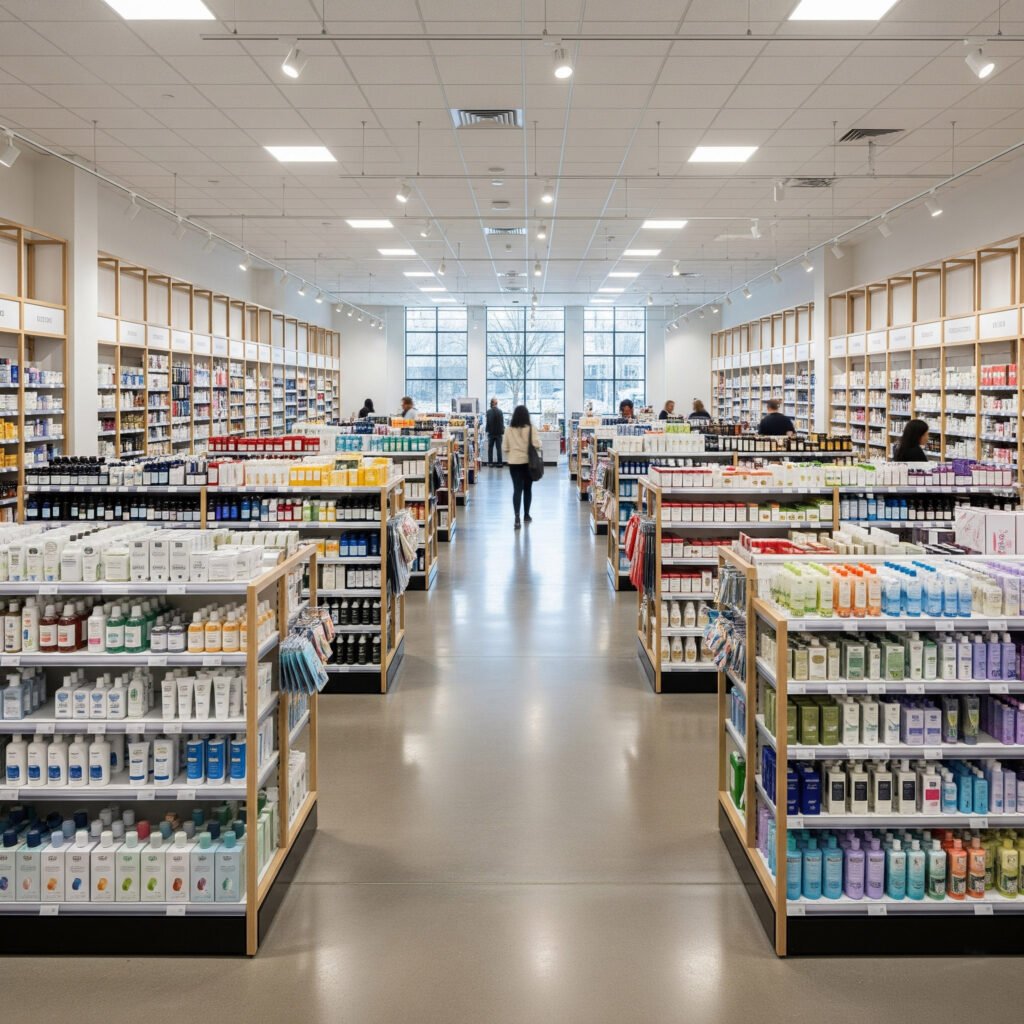
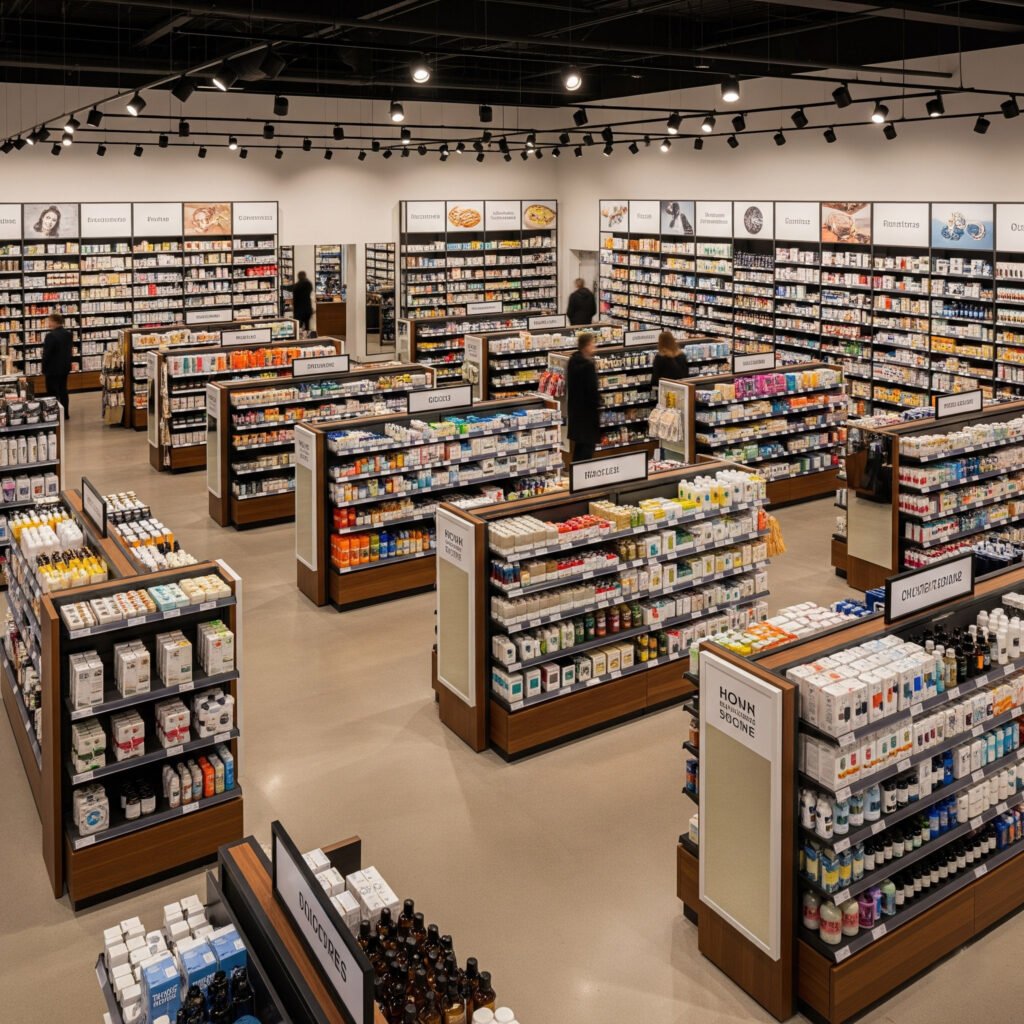
Shelves Shape First Impressions
Retail shelves do more than hold products. They immediately set the tone for any store. When customers step inside, shelves create the first impression before they notice individual items. Clean, organized shelving suggests professionalism. Cluttered or weak shelving sends a negative signal. This difference shapes how customers judge the brand. Strong shelves project reliability, while unstable ones suggest risk. For wholesalers and boutiques, presentation influences trust.
Shelves Build Structure and Flow
Beyond appearance, shelves control how a store functions. They determine the physical flow of customer movement. A smart layout creates paths that feel natural. Shoppers follow these paths without realizing it. Clear lines of sight encourage exploration. Disorganized placement discourages movement and creates frustration. Well-positioned shelves also separate categories. This separation prevents confusion and helps customers find products faster.
As a result, the store feels easier to navigate. With better flow, customers stay longer. More time in-store usually leads to more sales. Smooth circulation creates comfort, and comfort leads to stronger loyalty.
Shelves Support Branding Efforts
Every store carries a brand message. Shelves make that message visible. Their color, style, and finish reinforce the identity of the business. For example, sleek glass shelves suggest modern elegance. Wooden shelves create warmth and tradition. Even simple details like height and spacing communicate values. This connection between design and branding strengthens recognition. Customers begin to associate the store’s image with its shelving style.
Shelves Influence Buying Decisions
Finally, shelves shape what customers purchase. Placement affects visibility, and visibility drives sales. Products positioned at eye level sell faster. End-of-aisle shelves push promotions effectively. Deep shelving supports bulk products, while shallow shelving highlights premium goods. These choices steer customer attention. In many cases, buyers do not even realize their decisions are influenced by shelving design. A strong organization makes products look more attractive.
The easier items are to find, the more likely people are to buy them. When shelves combine order, clarity, and balance, they directly increase revenue. Good shelving does not just hold stock; it generates profit.
Shelves Influence Customer Experience
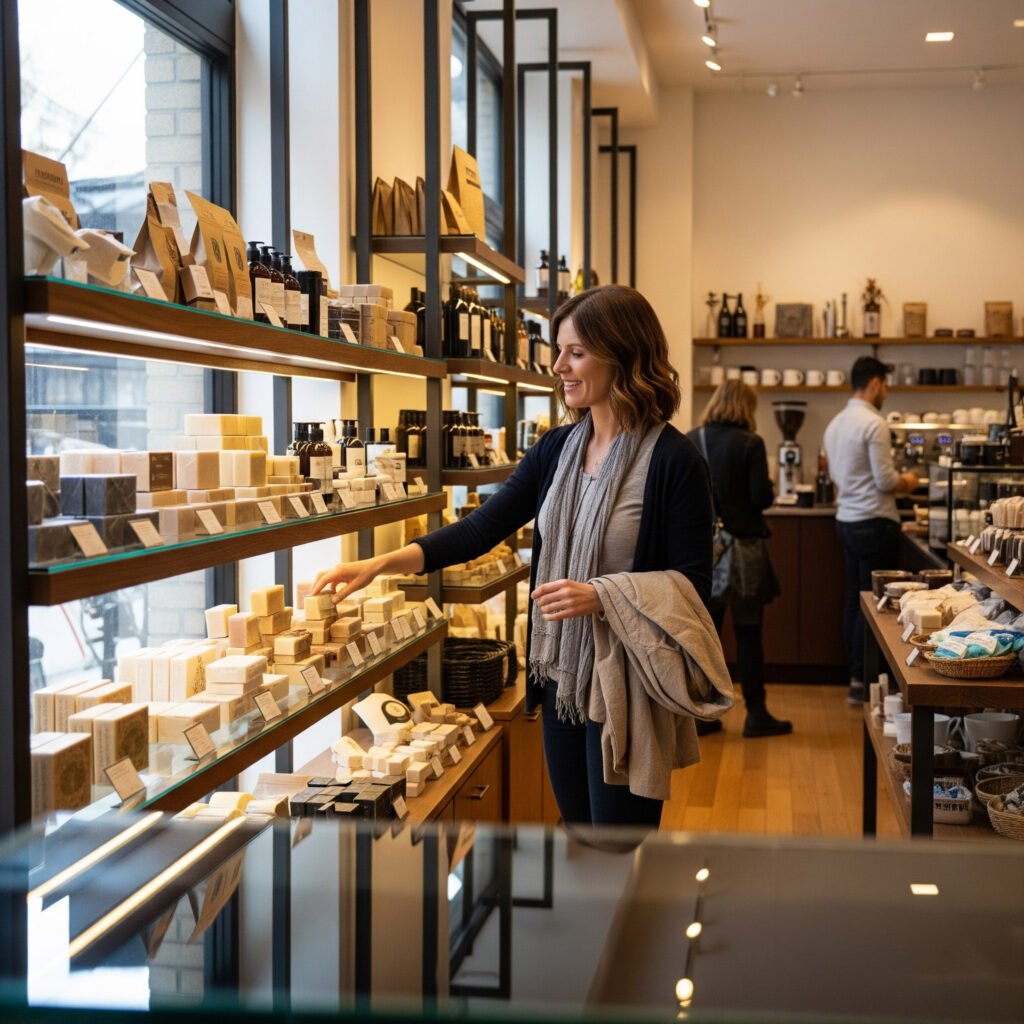
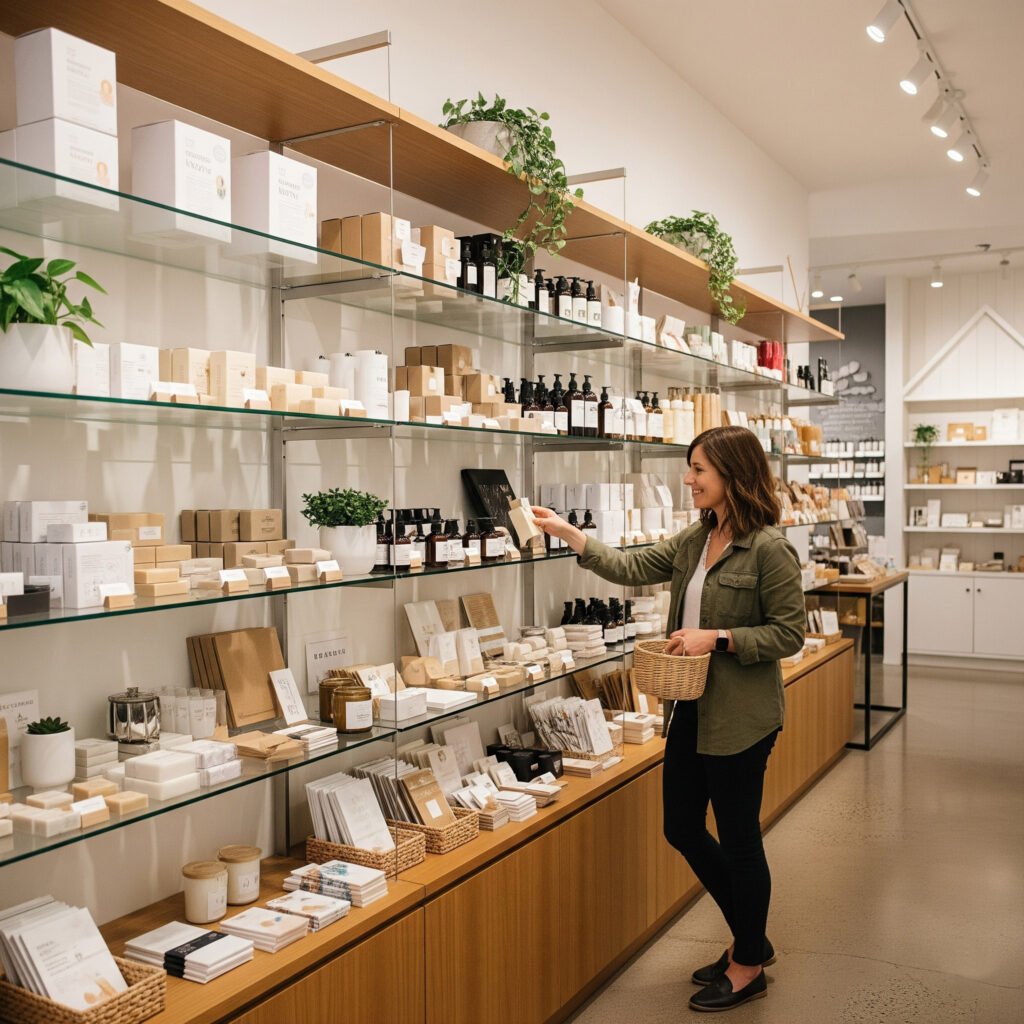
Building Trust Through Appearance
Shoppers make judgments quickly. When shelves look solid and well-finished, products gain credibility. A clean surface signals care and professionalism. Strong construction assures visitors that items are safe to handle. Over time, this trust builds loyalty. Customers want to return when they feel the store respects quality. In contrast, poor-looking shelves cause hesitation. Even excellent products lose appeal when displayed poorly.
Transitioning from first impressions to lasting impressions, shelves set the foundation for a reliable shopping atmosphere. The visual message is simple: well-designed shelves equal dependable products. Customers notice this detail, and their choices reflect that confidence.
Enhancing Comfort and Flow
Comfort shapes the shopping journey. Shelves that stand at the right height reduce strain. Wide spacing allows easy access without crowding. Customers move freely when aisles remain clear. Smooth edges, balanced proportions, and stable positioning all contribute to comfort. A relaxed customer spends more time exploring. This extra time often leads to more purchases. Furthermore, good flow reduces frustration. When shoppers can reach products without difficulty, their mood improves.
The experience feels effortless. Transitioning from comfort to interaction, shelves guide people naturally through the store. This harmony between structure and movement makes shopping both pleasant and productive.
Supporting Emotional Connection
Retail is not only about products. Emotion drives decisions. Shelves that present goods attractively create excitement. A polished design inspires curiosity. Neat rows and organized displays suggest care. This visual order makes customers feel valued. Shoppers believe that if the store invests in presentation, it also invests in their satisfaction. Warm tones, inviting textures, and balanced arrangements enhance this emotional bond. Instead of rushing, people slow down.
They browse, touch, and engage with products more deeply. Transitioning from emotion to loyalty, shelves influence feelings as much as sales. The result is a memorable shopping experience that customers want to repeat.
Encouraging Product Discovery
Discovery shapes customer experience. Shelves placed strategically reveal products step by step. A gradual reveal sparks curiosity. Customers feel rewarded when they uncover new items in each section. Proper arrangement avoids clutter and highlights variety. Clear labeling also directs attention. When products feel easy to discover, shoppers gain satisfaction. They enjoy the process, not just the purchase.
This sense of discovery builds excitement and encourages return visits. Transitioning from discovery to value, shelves act as silent salespeople. They tell stories, highlight details, and make exploration enjoyable. The customer leaves with not only products but also positive memories.
Step-by-Step Guide: How to Build A Set of Retail Display Shelves
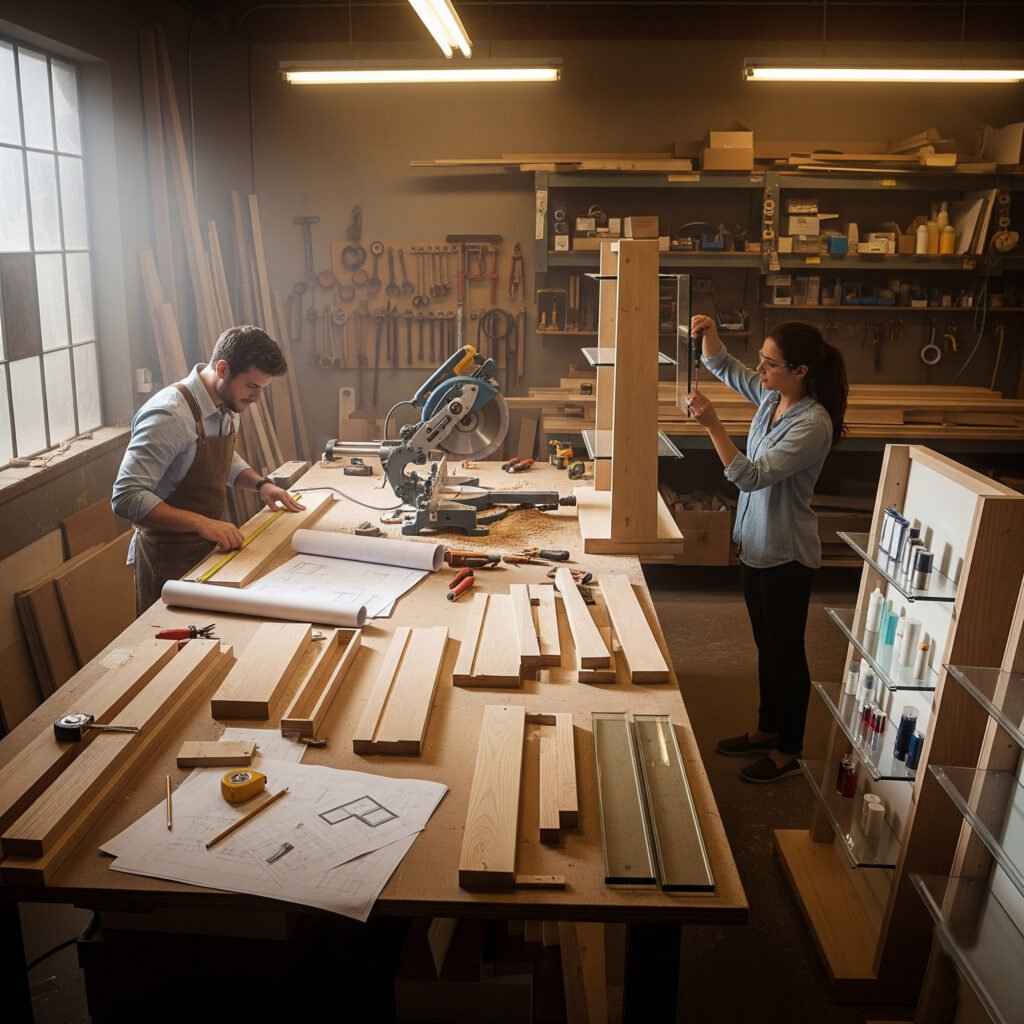
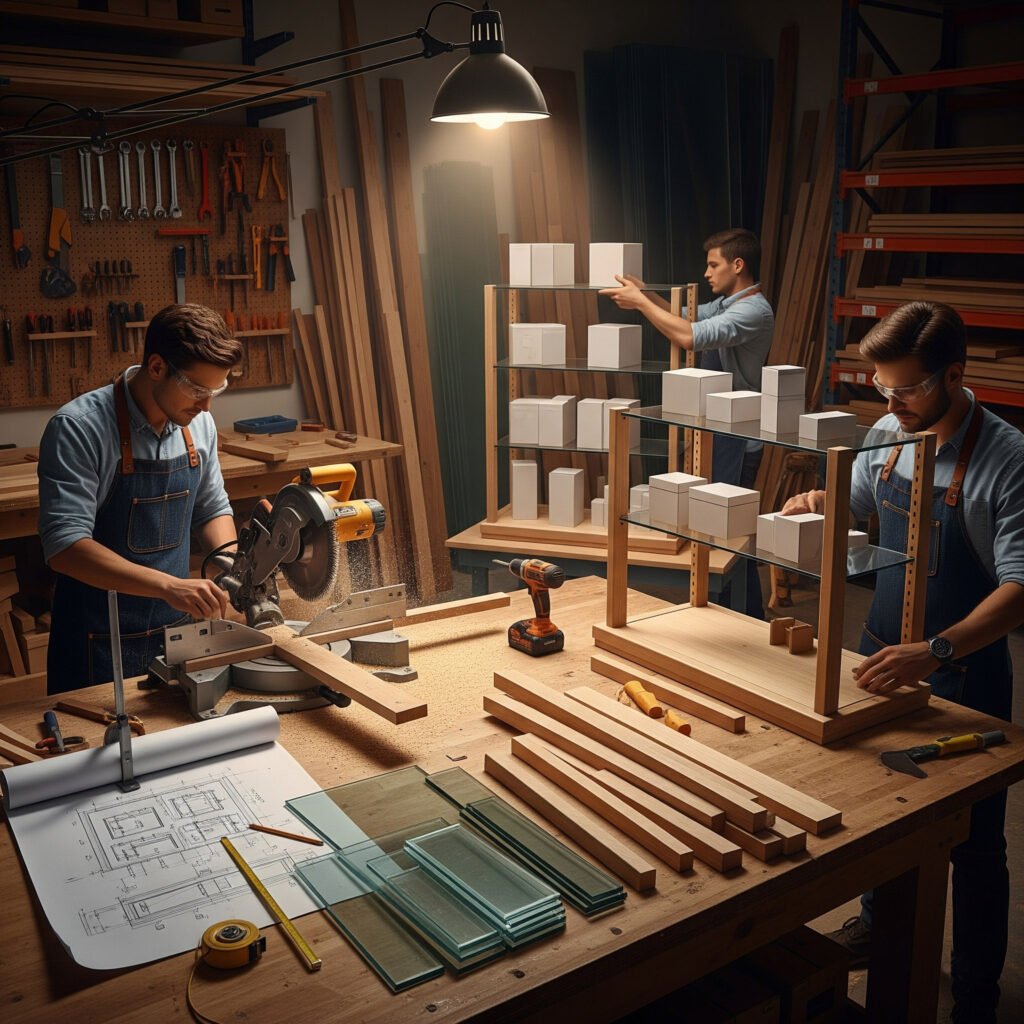
Step One: Planning the Layout
Every good project starts with planning. Without a clear plan, mistakes appear later. Measurements come first. A tape measure ensures accuracy. Space must be checked from wall to wall. Corners often create issues, so they need extra attention. After measuring, zones are marked. Entry points matter because they define traffic flow. Customers prefer a smooth path, not obstacles. Heavy products need sturdy zones.
Transitions are important. After measurements, sketches follow. Simple sketches show how space can function. They save time during assembly. Designs should balance customer flow and product exposure. Placing impulse goods near checkouts is smart. Everyday items belong in the main aisles. High-value items must be in visible zones. Each choice affects sales. Careful planning reduces wasted labor and material.
Step Two: Cutting and Preparing Materials
After planning, material preparation begins. Wood, glass, and metal need different tools. Cutting must always follow measurements. Precision ensures shelves fit together. Even a one-millimeter mistake causes instability. For wood, saw blades need to stay sharp. Smooth cuts save sanding time. Glass requires specialized cutters and safety equipment. Gloves and goggles protect against shards. Metal cutting needs strong blades and slow movement. Each material demands respect and focus.
Next, surfaces require treatment. Sanding wood removes splinters and sharp edges. This step makes products safe for handling. Glass edges can be polished for durability. Polished edges prevent accidents during installation. Metal edges must be filed down to stop cuts. Preparing surfaces extends the life of shelves. It also ensures workers remain safe. Once materials are cut and prepared, assembly becomes faster. Transitions between tasks matter here.
Step Three: Assembling the Shelves
Once materials are ready, assembly begins. The process starts with the frame. Frames hold the entire structure, so they require strength. Wooden frames need strong brackets. Metal frames use welding or bolts. Alignment is critical. A crooked frame weakens stability. Using levels prevents this issue. Frames act as the skeleton of shelves. Without stability, the entire system fails.
After the frame, shelves are attached. Boards or glass pieces slide into place. Brackets or clips secure them. Each connection must be tight. Loose parts create safety risks. Testing each shelf after installation ensures reliability. Pressure checks confirm weight capacity. Shelves must not bend under pressure. Step by step, the structure takes shape. Moving slowly but steadily prevents rework. At this stage, safety checks save money. Errors caught early are easier to fix. Once completed, the shelves resemble the original plan.
Step Four: Testing and Adjusting
Assembly alone does not finish the job. Testing ensures shelves can perform daily tasks. First, shelves must hold weight. Adding test loads checks their limits. If boards sag, stronger supports are added. If frames shake, bolts are tightened. Stress tests reveal weak points. Adjustments fix them before customers notice.
Next, alignment must be checked. Uneven shelves look unprofessional. Products also slide off tilted surfaces. A level ensures perfect balance. Even small misalignments reduce customer trust. Therefore, careful adjustments improve both safety and appearance. After alignment, stability needs confirmation. Moving shelves slightly tests their grip. A stable shelf does not wobble. This gives confidence to both staff and customers.
Finally, a review of functionality is essential. Shelves must support restocking. Staff should reach easily. Cleaning should remain simple. Testing covers more than weight. It ensures shelves work in daily use. Adjustments now avoid complaints later. Transitions from testing to usage should be smooth. A fully tested shelf performs well for years. At this point, the retail display is ready for service.
Why Fairwill Display
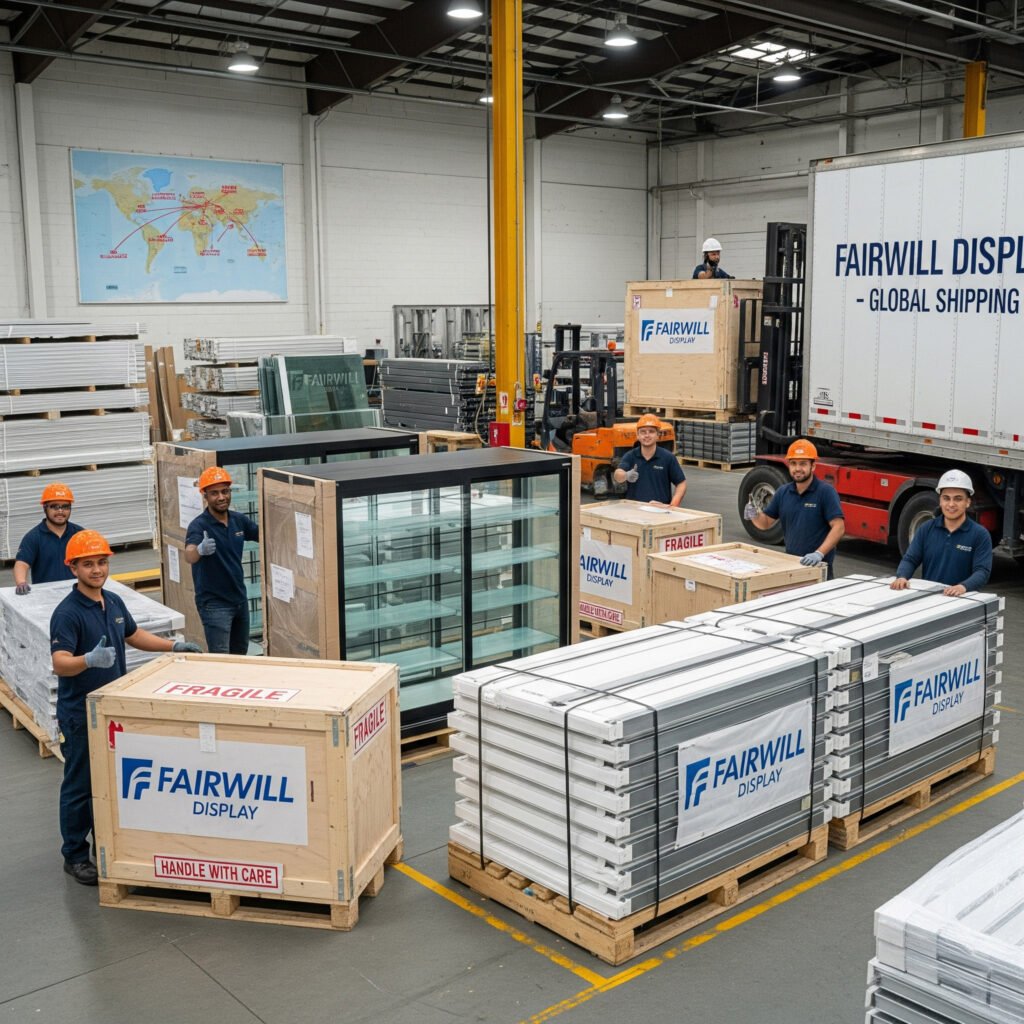
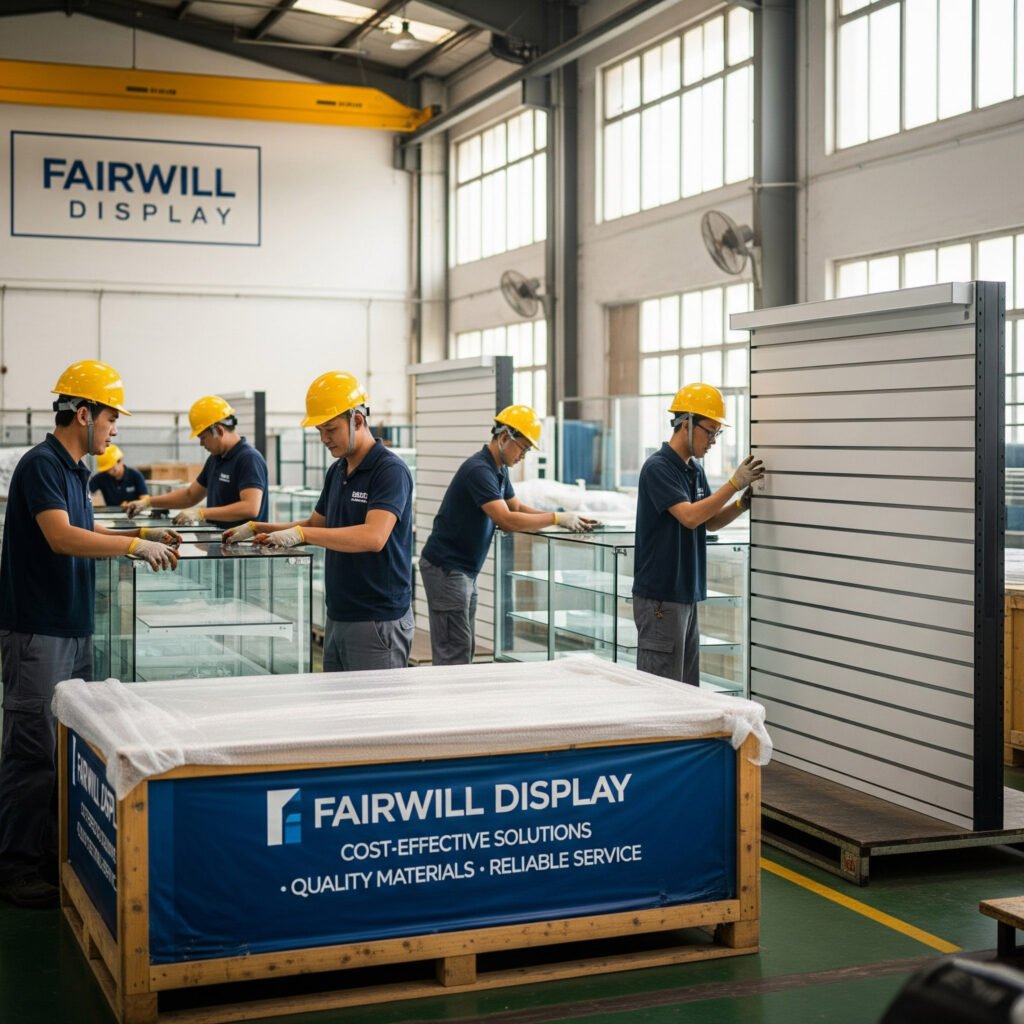
Saving Costs Without Losing Quality
As a business owner, I always watch my budget. When I looked for display fixtures, I worried about high costs. Working with Fairwill Display changed my mind. They offered E1 grade boards and tempered glass at prices I could afford. The materials looked solid, not cheap. I saved money while keeping a professional store image.
It felt different from other suppliers. Many promised low prices but cut quality. Fairwill Display explained how they controlled production in their own factory. They showed how bulk purchasing lowered costs. I understood the value I received. I got reliable shelves at a price that matched my budget.
Their focus on cost-effective solutions gave me confidence. Instead of wasting time comparing endless suppliers, I trusted them. I knew I was not overspending, and I also knew I wasn’t sacrificing durability.
Receiving Professional Advice at Every Step
Building a store layout can feel overwhelming. I had questions about design, safety, and product visibility. Fairwill Display guided me step by step. They didn’t just sell shelves; they gave advice tailored to my shop.
For example, I learned how to position glass showcases near entry points to highlight premium items. I also learned why slatwall panels worked better for flexible seasonal displays. Their advice was practical, not generic. It was based on years of experience with global clients.
Whenever I felt unsure, their team explained things clearly. They shared drawings, layouts, and ideas before I made a final decision. It felt like I had a consultant, not just a supplier. That professional support saved me from costly mistakes and made my store look polished.
Reliable Service From Order to Delivery
One fear I had when ordering from overseas was shipping. Glass and boards break easily if handled poorly. Fairwill Display removed that worry. Their packaging was strong, and every shipment arrived safe. They also managed customs and documentation smoothly.
Communication was another highlight. I never felt left in the dark. Updates came quickly, and my questions were answered clearly. I always knew the status of my order. That reliability made me feel secure.
Even after delivery, they didn’t disappear. I received follow-up support. When I had questions about assembling a slatwall unit, they explained everything. This after-sales care showed me they valued long-term relationships, not just one-time sales.
Building Long-Term Growth Together
For me, a supplier is more than a vendor. I want a partner who understands my growth goals. Fairwill Display feels like that partner. They don’t just sell; they suggest ways to improve my store strategy. Their knowledge of global retail trends gives me a competitive edge.
They also understand wholesalers like me. They know price matters, but they also know customers expect attractive displays. Their solutions balance both. Every order I place feels like an investment in my business growth.
Most important, they listen. My needs come first. They adapt to my budget, market, and timeline. That flexibility makes me trust them even more.
Final Thought: Why I Chose Them
Choosing Fairwill Display was not just about buying shelves. It was about gaining a partner. I got affordable prices, expert advice, safe shipping, and long-term support. I stopped worrying about store fixtures and started focusing on growing my business.
If you want reliable display solutions with real guidance, I recommend them. Send them an inquiry today. Just like me, you will discover a partner who cares about your success.
